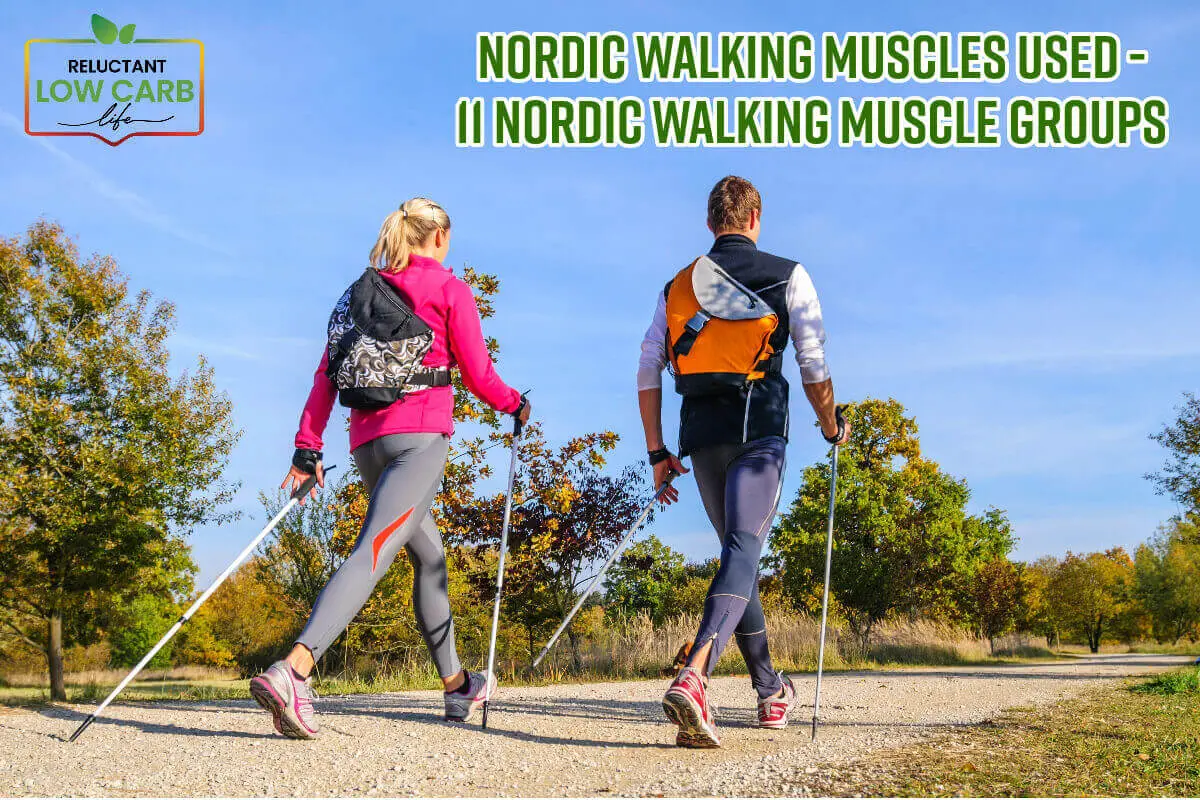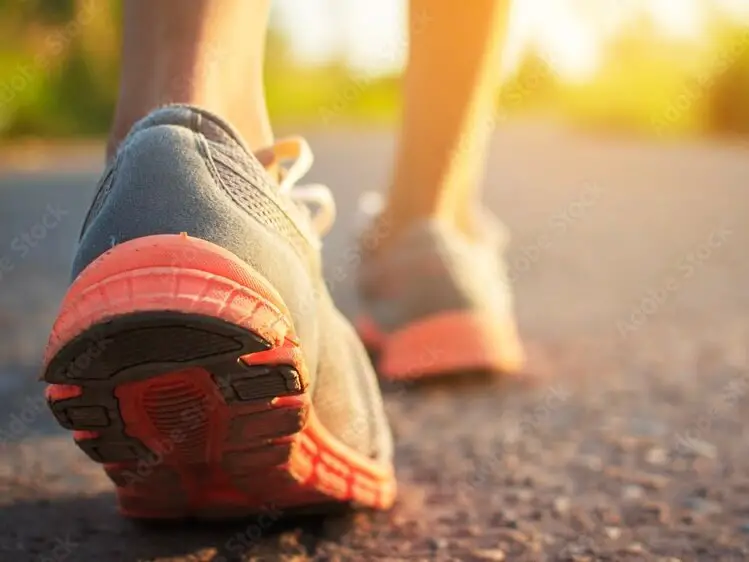Nordic walking is a fitness activity that engages a broader spectrum of muscles than standard walking. I have been Nordic Walking for several years and can attest that Nordic Walking uses more muscles than regular walking.
Nordic walking has a heightened muscle engagement primarily attributed to its upper and lower body utilization. You get a full-body workout when you walk with the Nordic Walking poles; join us as we delve into the 11 significant muscle groups activated during Nordic walking, revealing why it is an exceptional exercise choice for a full-body workout.
Table of Contents
- The Power Of Nordic Walking: A Comprehensive Guide To The 11 Muscle Groups Used
- Related Question
The Power Of Nordic Walking: A Comprehensive Guide To The 11 Muscle Groups Used
Nordic walking, a popular outdoor activity in Finland, has gained worldwide recognition for its numerous health benefits. This low-impact exercise provides an excellent cardiovascular workout and engages many muscle groups.
Unlike regular walking, Nordic walking involves using specially designed poles, which intensify the workout and activate various muscle groups.
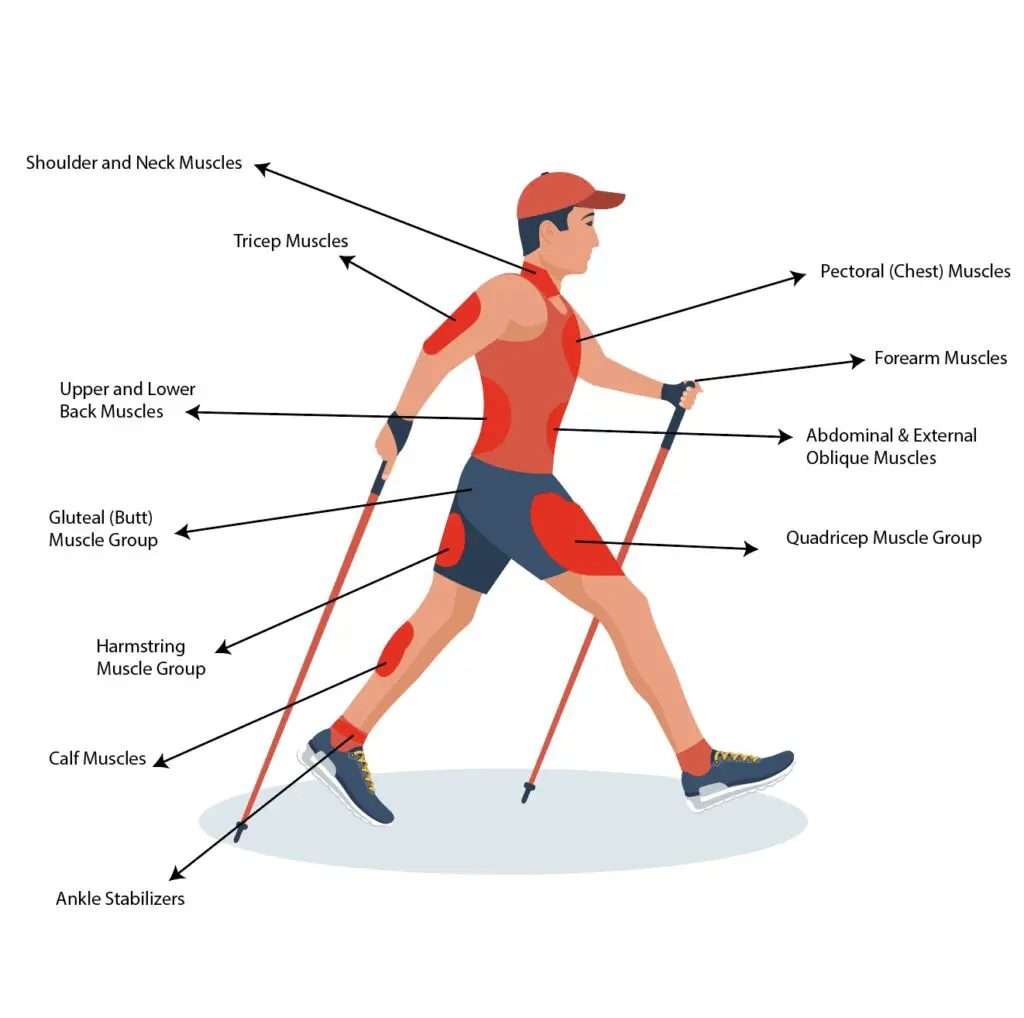
This comprehensive guide will delve into the major muscle groups engaged during Nordic walking and explore how this unique exercise can help you achieve your fitness goals while enjoying the great outdoors.
Shoulder And Neck Muscles
Nordic walking places a significant emphasis on your shoulder and neck muscles. You’ll notice that the pole motion involves a controlled push and pull movement when you engage in this activity.
This action effectively works your deltoids, trapezius, and rhomboid muscles in the shoulders and upper back. These muscles help stabilize and control the movement of your arms, improving posture and reducing tension in the neck and upper back.
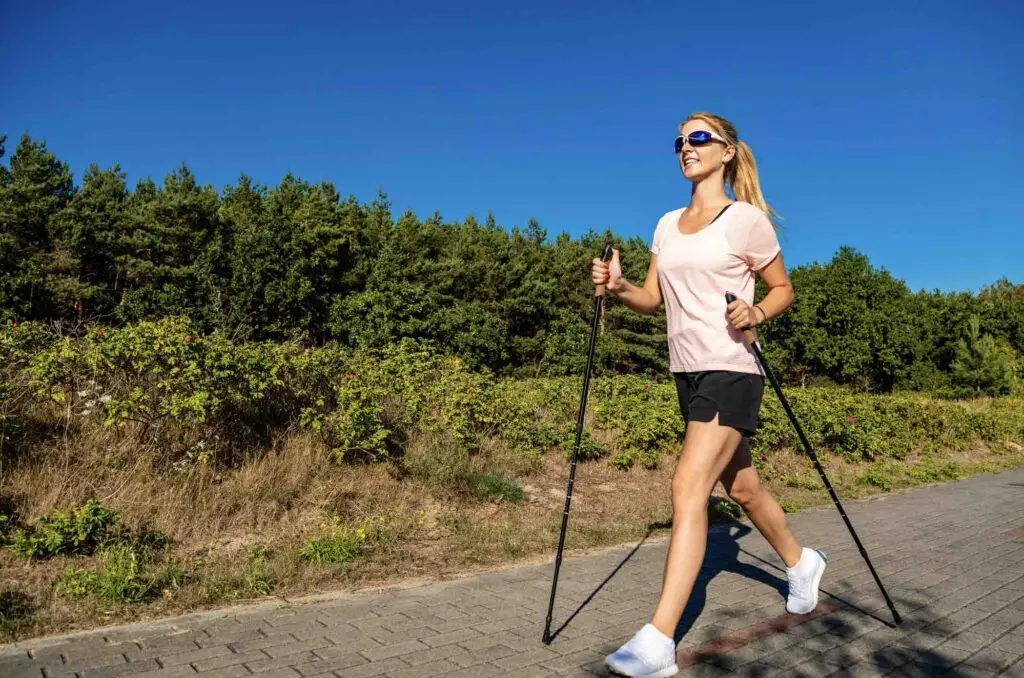
Tricep Muscles
Your triceps, the muscles located at the back of your upper arms, play a crucial role in the pushing motion of the poles during Nordic walking. Extending your arms with each stride, your tricep muscles contract to provide power and momentum.
This engagement helps tone and strengthen your arms, improving overall upper body strength.
Upper And Lower Back Muscles
Nordic walking engages the upper and lower back muscles, making it an excellent activity for improving posture and relieving back pain. The repetitive motion of propelling the poles forward recruits the muscles in your upper back, such as the latissimus dorsi and rhomboids, as well as those in your lower back, including the erector spinae.
Strengthening these muscle groups can alleviate tension and discomfort, especially for individuals with desk jobs or sedentary lifestyles.
Gluteal (Glutes Or Butt) Muscle Group
The gluteal muscles, commonly called the glutes, are essential for stabilizing the pelvis and generating power during Nordic walking. As you step forward and push off with each stride, your gluteal muscles contract to provide the necessary propulsion.
Engaging these muscles improves your walking efficiency and helps tone and lift your buttocks, providing aesthetic benefits.
Hamstring Muscle Group
Nordic walking recruits the hamstring muscle group, located on the back of your thighs, to control the swinging motion of your legs as you walk. These muscles are essential for knee stability and help prevent injuries.
Regular engagement of the hamstrings through Nordic walking can lead to improved muscle flexibility and reduced risk of strains or pulls.
Calf Muscles
Your calf muscles, specifically the gastrocnemius and soleus, play a vital role in stabilizing your lower legs and feet during Nordic walking. They help maintain balance and control, especially when walking on uneven terrain.
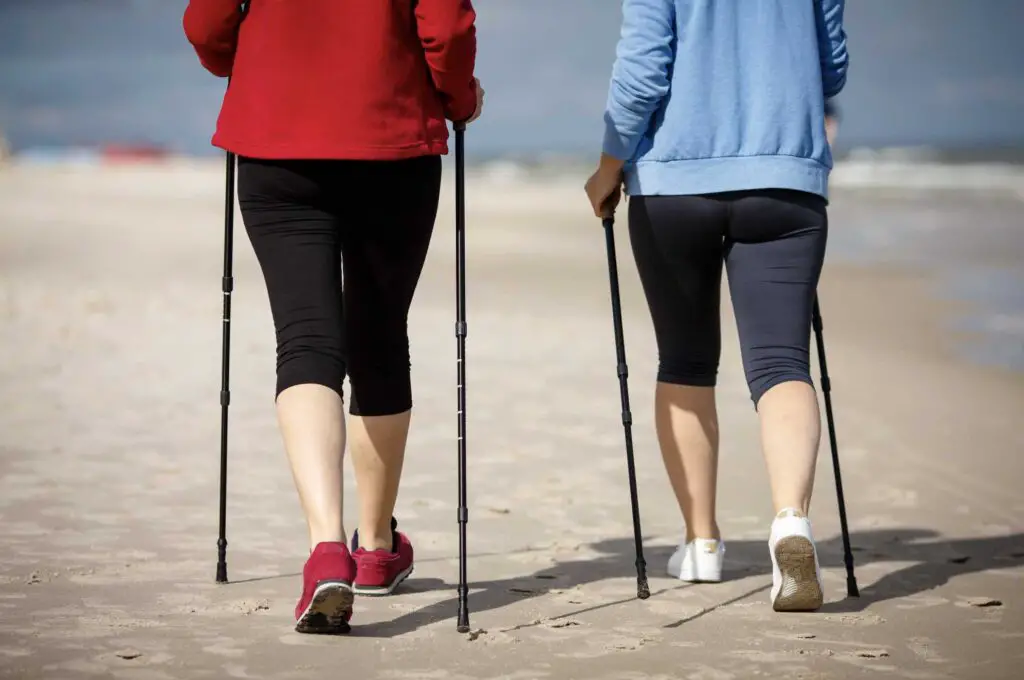
As you push off with each step, your calf muscles contract, aiding in propulsion and enhancing overall lower leg strength.
Ankle Stabilizer Muscles
The small muscles surrounding your ankles are often overlooked, but they are crucial in maintaining balance and stability during Nordic walking. These muscles, including the tibialis anterior and peroneus longus, stabilize your ankles and protect against sprains and injuries.
Regular Nordic walking can help improve the strength and endurance of these often-neglected muscles.
Quadricep Muscle Groups
Your quadriceps, located in the front of your thighs, are heavily engaged during Nordic walking. These muscles help extend your knee joint and provide power during the push-off phase of each stride.
As a result, Nordic walking is an excellent way to strengthen and tone your quadriceps, enhancing your overall leg strength and endurance.
Abdominal And External Oblique Muscle Group
Though Nordic walking primarily targets the upper body, it also engages your core muscles to maintain stability and proper posture. Your abdominal muscles, including the rectus abdominis, transverse abdominis, and external oblique muscles, help support your spine and pelvis.
Keeping your core engaged throughout the activity can improve core strength and promote better posture.
Forearm Muscles
The action of gripping and pushing the Nordic walking poles activates the muscles in your forearms, including the flexor and extensor muscles. These muscles are responsible for controlling the poles and maintaining your grip.
Strengthening your forearm muscles can enhance your overall strength and endurance, making everyday tasks easier.
Pectoral (Chest) Muscles
Lastly, Nordic walking also engages your pectoral muscles located in your chest. Your pectorals assist in this motion as you swing your arms forward during each stride.
While Nordic walking primarily focuses on the upper body, this engagement helps maintain muscle balance and contributes to a well-rounded workout.
Nordic walking is a holistic exercise that activates various muscle groups. By incorporating specially designed poles into your walking routine, you can enhance the intensity of your workout and experience numerous physical benefits.
From improved upper body strength to enhanced posture and core stability, Nordic walking offers a comprehensive fitness experience in the great outdoors.
So, grab your poles, head outside, and harness the power of Nordic walking to achieve your fitness goals while enjoying the natural beauty of your surroundings.
You Can Listen To Our Podcast Exploring the 11 Nordic Walking Muscle Groups Below or By clicking here.

At Reluctant Low Carb Life, we are staunch advocates of the Health Trifecta: Fullness, Fitness, and Freshness. Additionally, we embrace the pillars of health, wellness, and graceful aging. Our mission is to provide honest and precise information to individuals dedicated to adopting a healthy lifestyle while enhancing their fitness and well-being.
We have a free monthly newsletter that is filled with information and helps you remain updated. Subscribe to the Reluctant Low Carb Life newsletter by clicking here.
Listen to our weekly podcast, Reluctant Low Carb Life, on all the major podcast platforms by clicking here.
Follow us on Instagram and Facebook by clicking here.
Related Question
Is Walking 7 Miles A Day Good Exercise?
Walking seven miles a day is great exercise. But even if you cannot walk seven miles a day, just getting out to walk has many physical and mental benefits. Studies have shown us how important walking is for not only our overall physical health but also our mental health.
You can read more about Is Walking 7 Miles A Day Good Exercise?by clicking here.
What Will Be The Effect Of Exercise If I Don’t Change My Diet?
There are many benefits to exercise, such as our overall well-being and health, we will age better, our minds become sharper, we can handle some of the stresses in life better, we live life to the fullest, and we can better manage our weight.
You can read more about What Will Be The Effect Of Exercise If I Don’t Change My Diet? by clicking here.
Is Nordic Walking Better Than Regular Walking?
Nordic walking is shown to engage about 90% of your muscles. It is known to be a superior exercise when compared to just regular walking. There are many added benefits to adding Nordic walking poles to your walking routine. It is a relatively simple and easy walking exercise to do.
You can read more about Is Nordic Walking Better Than Regular Walking? by clicking here.

